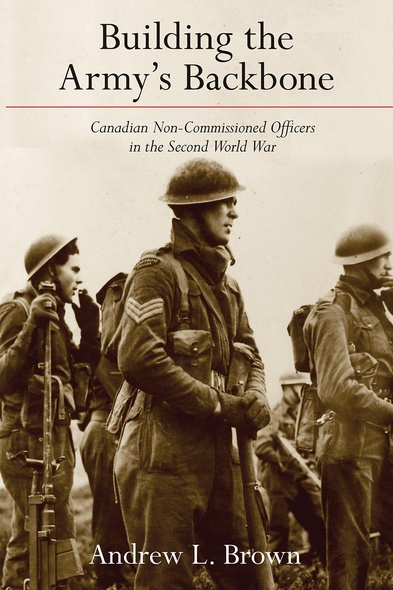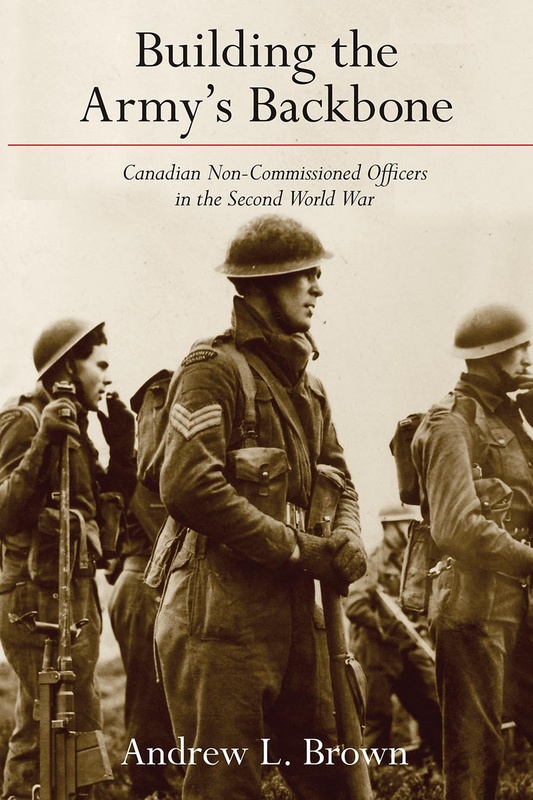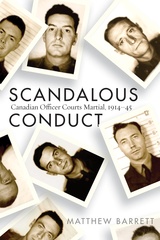
Building the Army’s Backbone
Canadian Non-Commissioned Officers in the Second World War
In September 1939, Canada’s tiny army began its remarkable expansion into a wartime force of almost half a million soldiers.
Building the Army’s Backbone tells the story of how senior leadership created a corps of non-commissioned officers (NCOs) that helped the force train, fight, and win. No army can function without a backbone of skilled NCOs – corporals, sergeants, and warrant officers who serve as leaders, trainers, and disciplinarians. The Canadian army needed to create tens of thousands of NCOs out of raw civilian material. These citizen-soldiers had to become leaders, expert weapons handlers, and instructors proficient in the latest tactics, and they had to do it quickly. Exploring an area that has so far received little attention in academic and popular literature, Andrew Brown uncovers an innovative two-track NCO-production system: locally organized training programs were run by units and formations, while centralized training and talent-distribution programs were overseen by the army in Canada and Britain.
To bring coherence to the two-track approach, the army circulated its best-trained NCOs between operational forces, the reinforcement pool, and the training system. The result was a corps of NCOs that collectively possessed the necessary skills in leadership, tactics, and instruction to help the army succeed in battle.
Scholars of military history throughout the British Commonwealth will find this study of raising and preparing forces engaging, as will military instructors and students, and Canadian personnel with an interest in their army’s history.
Andrew Brown…has credibly produced a historiographic masterpiece…It is a significant read for every NCO, military leaders, instructors, and historians, and anyone who wants to know how key conditions were set for Canadian military success in the Second World War.
Overall, [Brown] presents a narrative of NCO development that is contextualised within the Canadian Army’s wider wartime activities. It is a thoroughly valuable contribution to the historiography
Integrating a wide body of rich archival research with the voice of the soldier, Building the Army’s Backbone provides unprecedented insights into the army’s wartime training. This is a considerable achievement.
This is a critical new book on the history of raising and training effective Canadian forces.
The author, a lieutenant colonel who began his military career as a non-commissioned member, brings his own professional insight in explaining the multiple roles and responsibilities of NCOs, and the increasing demands placed on them as the war progressed.
Lieutenant-Colonel Andrew L. Brown is an assistant professor of history at the Royal Military College of Canada. With over three decades of service in the army, he has served in a variety of positions at home and on operations abroad. His research focuses on army manpower issues in the first half of the twentieth century, especially in the Second World War.
Introduction
1 Profile of the Infantry Senior NCOs
2 NCO Development before the War
3 The Wartime Army’s Expectations of Its NCOs
4 Wartime Drivers of NCO Development
5 Unit and Formation Programs
6 The Mass Army’s Programs in Canada
7 The Mass Army’s Programs in the United Kingdom
8 Managing the Talent
Conclusion
Notes; Bibliography; Index







